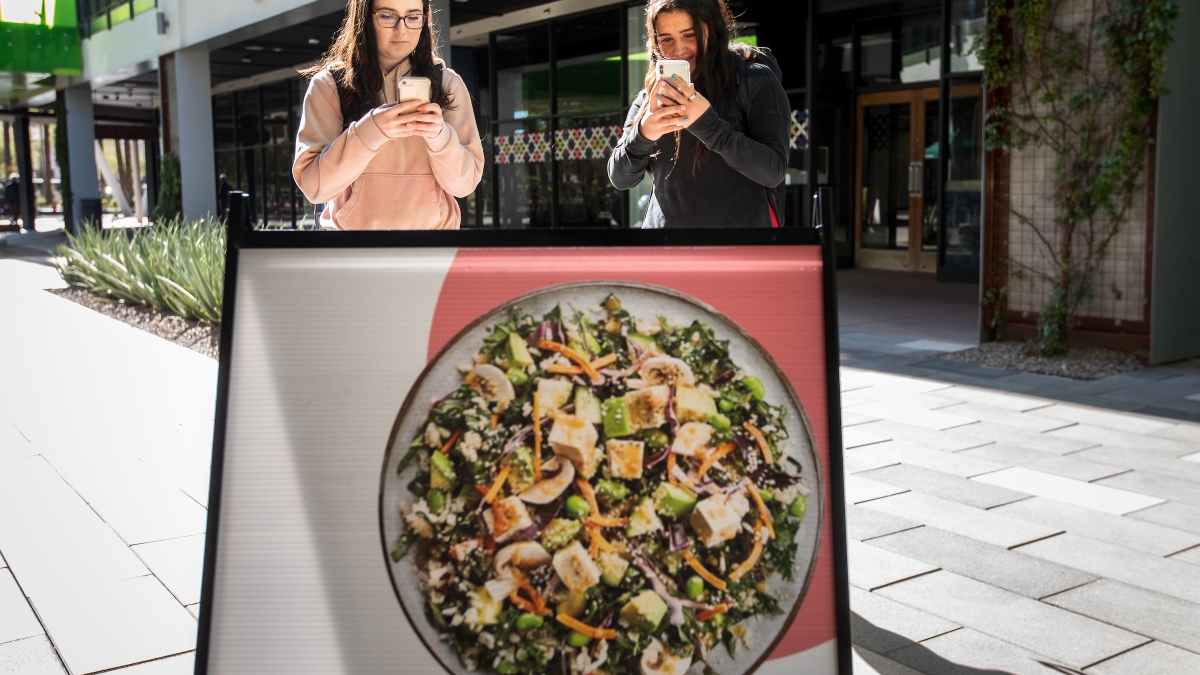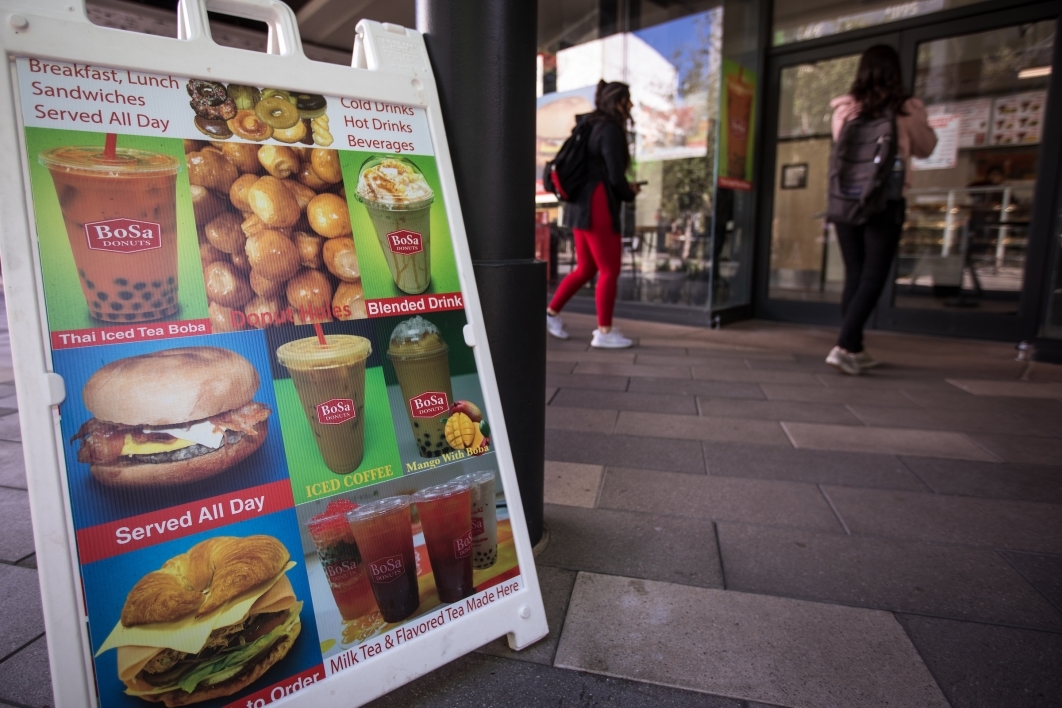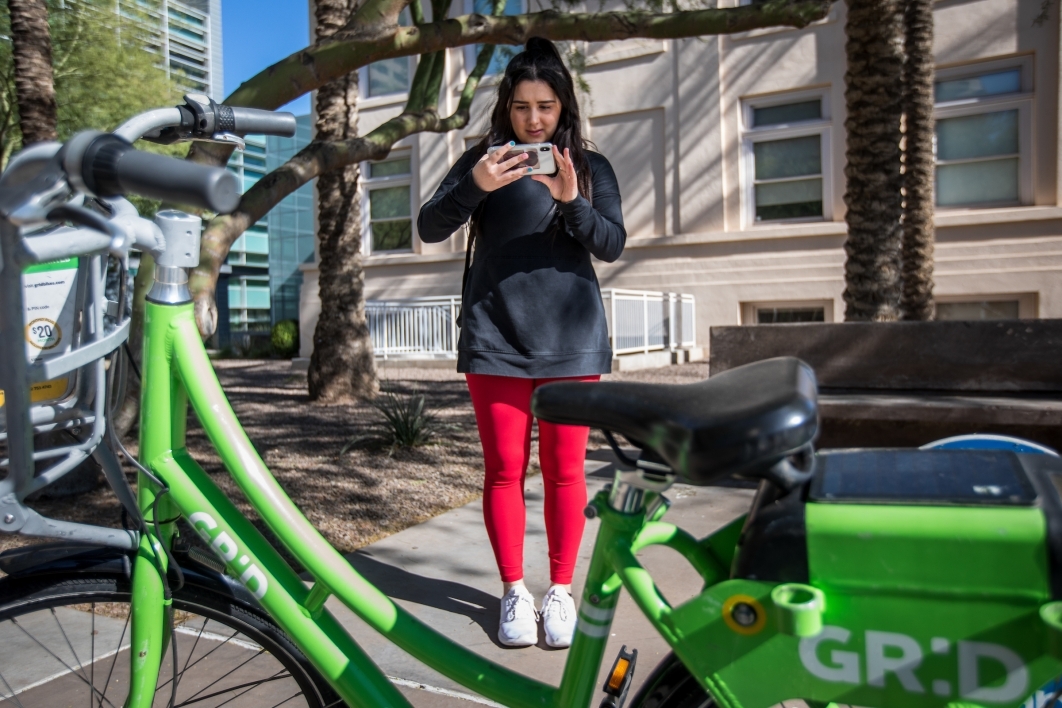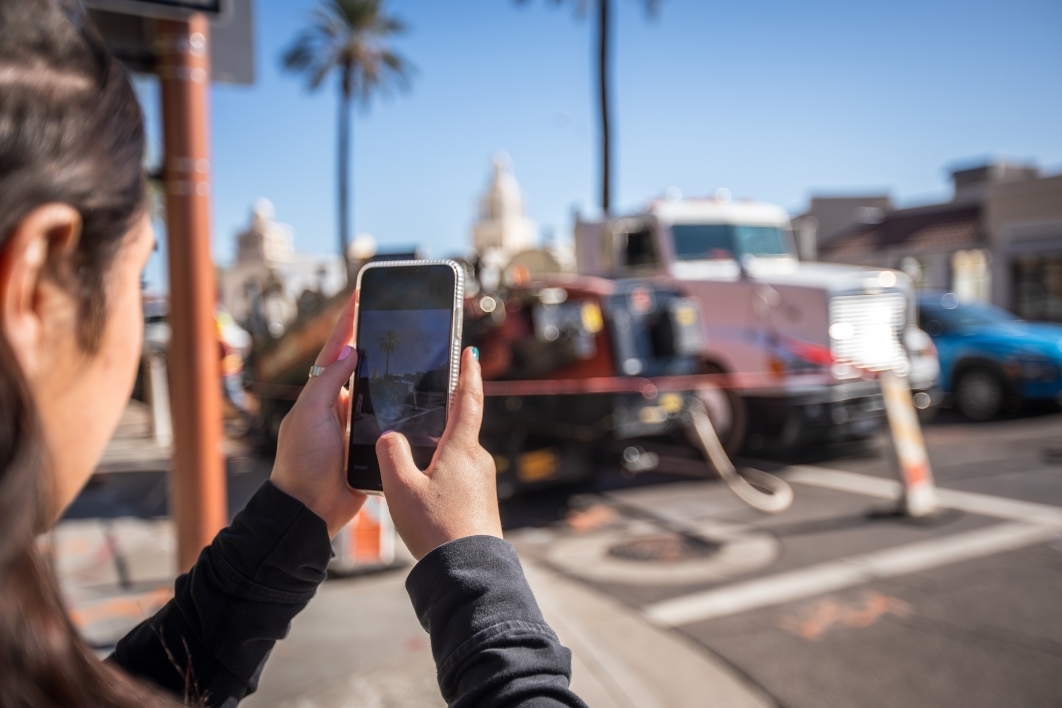Downtown Phoenix doughnut lovers rejoiced this year when beloved Valley chain Bosa Donuts opened not one, not two, but three locations within a 1-mile radiusOne at the Arizona Center on the northeast corner of Van Buren and Third streets, one inside an office tower at First Avenue and Monroe Street and one inside a high-rise condominium on Fourth and Jackson streets, just west of Chase Field — in case anybody was wondering..
Students in Arizona State University College of Health Solutions Clinical Assistant Professor Deborah Williams’ brand new course, CHS 294: Community Health and Translational Research, took note for a different reason.
“It’s crazy to think about how there’s almost no other options besides cafes or junk food,” said health sciences sophomore Jordyn Stebbins, sitting outside of a Starbucks just around the corner from the new Bosa location on a recent November afternoon.
She and classmate Hannah Kirsch, a biological sciences sophomore, have spent the past couple weeks surveying a portion of the downtown area between Seventh Avenue on the west to Seventh Street on the east and McDowell Road on the north to Lincoln Street on the south.
As they crisscross the city streets, track park pathways and navigate retail centers, they’re looking for health indicator data — features of the environment that either promote or hinder healthy lifestyles. A wide sidewalk, for example, may encourage people to walk short distances rather than drive, while an abundance of liquor stores could contribute to higher instances of alcoholism in a particular area.
The data they’re collecting is part of a course group project, called the Seven by Seven project, referring to the names of the streets that serve as the eastern and western boundaries to their fieldwork. At the end of the course, students will present their findings along with recommendations for policy changes that would create an environment more conducive to healthy living.
This course and others like it that turn students into citizen scientists are an outcome of the College of Health Solutions’ translational science initiative. The point of the initiative is twofold: to shorten the time between the point when a research discovery is made and when it impacts the community, and to ensure every College of Health Solutions student receives some sort of experiential learning before they graduate, though CHS 294 and other courses are open to students from any college or school at ASU.
“The citizen science approach seemed like an exciting and interesting way to give students both research skills and a familiarity with the local community, as a precursor for them to become more embedded in it in the future,” Williams said.
As part of the Seven by Seven project, students in her course are focusing on environmental indicators for five health domains: features that promote or hinder physical activity; availability of healthy food; safety; sun/heat exposure; and substance abuse/misuse.
When ASU Now met up with Stebbins and Kirsch, they were zeroing in on the first two, respectively. Using an existing app called Our Voice, which was developed in partnership with Stanford University and College of Health Solutions Associate Professor Matt Buman, the pair can use their smartphones to take photographs of things like unsafe crosswalks and the location of ride-share bikes, record a brief audio or text message about why it was documented and select an icon to connote whether it is a positive or negative health indicator. The app then geolocates every photo onto a map of the area, displaying the positive or negative icon to give a 30,000-foot view of the environmental health there.
The data Stebbins and Kirsch have collected thus far has suggested that food choices in their assigned sector lack diversity and healthy options, and the physical environment is not as safe as it could be for those living with disabilities.
“It kind of just opens your eyes to all the small things you normally wouldn't notice,” Stebbins said. “One thing that stood out to me was a lot of the crosswalks at intersections don't have the sounds to notify the visually impaired if they’re able to cross.”
This is the first semester the 294 course has been offered, and Williams sees it as an opportunity to learn and continue experimenting on future iterations. By the end of the spring semester, she plans to be able to have students present their findings to local policymakers and community members.
“It’s a different approach to learning community health,” Kirsch said. “It’s better than just sitting in the classroom.”
Top photo: ASU College of Health Solutions students Hannah Kirsch (left) and Jordyn Stebbins take photos of a restaurant sign using the Our Voice app as part of a community health and translational research class documenting support and barriers to healthy living in downtown Phoenix. Photo by Charlie Leight/ASU Now
More Health and medicine
Is ‘U-shaped happiness’ universal?
A theory that’s been around for more than a decade describes a person’s subjective well-being — or “happiness” — as having a U-shape throughout the course of one’s life. If plotted on a graph, the…
College of Health Solutions medical nutrition student aims to give back to her Navajo community
As Miss Navajo Nation, Amy N. Begaye worked to improve lives in her community by raising awareness about STEM education and health and wellness.After her one-year term ended last month, Begaye’s…

Linguistics work could improve doctor-patient communications in Philippines, beyond
When Peter Torres traveled to Mapúa University in the Philippines over the summer, he was shocked to see a billboard promoting Arizona State University.“It wasn’t even near the university,” said…



